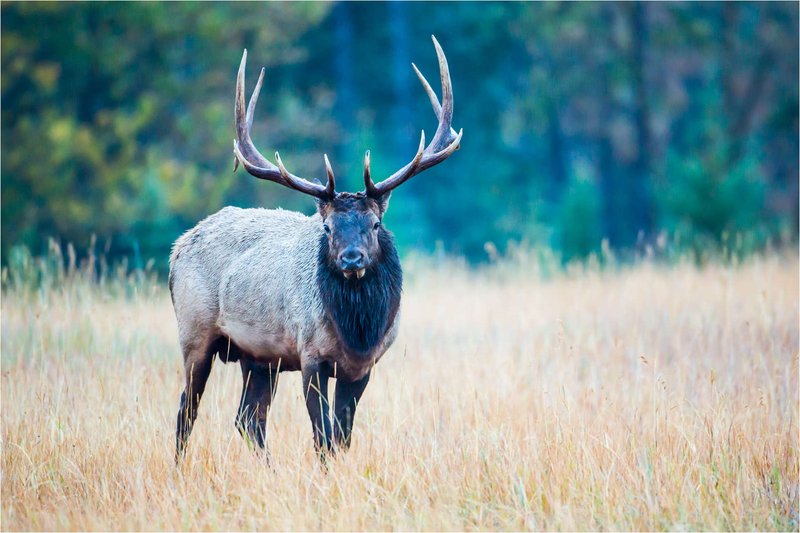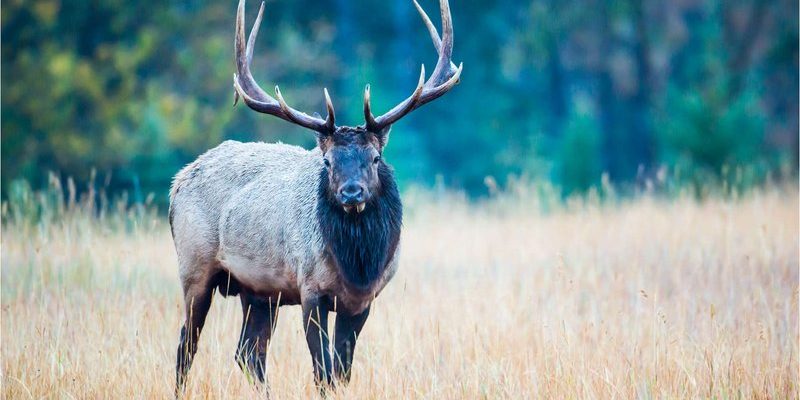
Let’s break down this fascinating topic. Wapiti might seem like they just graze and wander, but their brains are busy processing a lot more than we realize. From social interactions to environmental adaptations, these animals demonstrate a range of skills that hint at a deeper intelligence. So, how does a wapiti show its smarts? Let me explain.
Understanding Wapiti Intelligence
Wapiti are part of the deer family and are known for their impressive size and striking antlers. But when we talk about intelligence, what do we actually mean? **Intelligence** in animals can be defined as the ability to learn, solve problems, and adapt to changes in their environment. For wapiti, this includes their ability to stay aware of predators, find food, and interact socially.
You might wonder how scientists measure intelligence in animals like the wapiti. Researchers often study their behavior in different situations, such as in the presence of threats or when searching for food. **Observations** show that wapiti can remember the locations of food sources and are able to navigate through their habitats effectively, which is no small feat!
What’s even more interesting is how wapiti communicate with one another. They have a range of vocalizations and body language that they use to express different things—from calling their young to alerting the herd of danger. This kind of communication hints at a social structure that relies on understanding and responding to one another, a clear sign of their cognitive abilities.
Social Dynamics and Group Behavior
Wapiti are social animals that typically live in herds. This social structure plays a crucial role in their cognitive abilities. Living in a group means they must constantly evaluate their relationships with other wapiti, monitor hierarchies, and work together to stay safe. **Group behavior** can also lead to learning opportunities; younger wapiti watch and imitate the older ones, which helps them acquire survival skills.
For instance, during mating season, male wapiti will engage in displays of strength and dominance. These interactions aren’t just about physical prowess; they also involve a lot of strategic thinking. A male must assess the strengths and strategies of his competitors to decide when and how to assert himself. This behavior demonstrates that wapiti possess a level of social intelligence that helps them navigate complex situations.
Moreover, their social bonds can impact their survival. For example, wapiti often rely on each other to detect threats. By staying close to their herd and maintaining awareness of their surroundings, they can respond quickly to predators. This teamwork is not just instinctual; it’s a learned behavior that showcases their cognitive abilities.
Problem-Solving Skills in Wapiti
You may be surprised to learn that wapiti exhibit problem-solving skills that can rival those of some other animals. When confronted with obstacles, whether it’s a fence or a barrier in their path, wapiti will often try different approaches to figure out how to overcome the challenge. This adaptability is a clear indicator of their cognitive capabilities.
For example, if a wapiti encounters a fallen tree blocking a trail, it might try walking around, jumping over, or even nudging it aside with its antlers. This exploration demonstrates a willingness to experiment and learn from their environment. Interestingly, when wapiti successfully navigate an obstacle, they are more likely to remember that solution for future encounters. This ability to learn from experience is a hallmark of intelligence.
Researchers have also noted that wapiti can adapt their feeding habits based on seasonal changes and food availability. In winter, when food is scarce, they may dig through the snow to find vegetation, showing their ability to modify behaviors based on environmental conditions. This adaptability underlines their cognitive flexibility.
Memory and Spatial Awareness
Memory plays a vital role in the survival of wapiti. They are known to have excellent spatial awareness, which helps them remember the locations of food sources and important landmarks in their territories. This skill is crucial, especially during harsh weather conditions when food is hard to find.
When wapiti migrate between feeding grounds, they often travel the same routes year after year. Their ability to recall these paths shows that they have a strong mental map of their environment. In fact, they can even remember where to find the best water sources or the safest areas to graze. This kind of memory is critical for their survival, particularly in regions where seasonal changes can dramatically affect their habitat.
Additionally, researchers have found that wapiti can also use landmarks, like mountains or rivers, to navigate. This ability to relate their surroundings to their memory further emphasizes their cognitive strengths. If they can learn and remember these features, they are better equipped to handle the challenges of their environment.
Emotional Intelligence in Wapiti
Beyond their cognitive skills, wapiti also display signs of **emotional intelligence**. This refers to their ability to perceive, understand, and respond to the emotions of others within their herd. Wapiti have been observed engaging in nurturing behaviors, especially towards young calves. Mothers are very attentive, guiding their young and teaching them survival skills.
Moreover, wapiti show strong bonds with their fellow herd members. When one becomes stressed or frightened, others often respond with comforting behaviors, such as close proximity or gentle nudging. This empathy helps reinforce social bonds and promotes group cohesion, which is essential for their survival.
Interestingly, wapiti are also sensitive to changes in their environment. They can sense disturbances, such as the presence of a predator or sudden noises, and quickly react. Their ability to read the emotional states of others and respond appropriately showcases a level of **emotional awareness** that adds to their overall intelligence.
How Wapiti Compare to Other Animals
When we consider wapiti’s intelligence, it’s helpful to compare them to other animals. For example, many people think of dolphins or apes as some of the most intelligent creatures. While wapiti might not perform tricks like dolphins, their intelligence lies in their adaptability, social dynamics, and problem-solving skills.
In the animal kingdom, intelligence can take many forms. A wapiti excels in its environment by developing strong foraging tactics and cooperating with its herd to fend off dangers, which are vital skills in the wild. In contrast, some primates may show advanced tool use, but wapiti have their own unique strengths that are equally impressive in their context.
Ultimately, comparing different species highlights the diverse ways intelligence can manifest. Wapiti may not have the reputation of being “smart,” but their behaviors reflect a high degree of adaptation and intelligence suited to their lifestyles.
So, how smart is a wapiti? Honestly, they’re pretty clever in their own right. Their social structures, problem-solving skills, memory, and emotional intelligence all showcase their unique blend of cognitive abilities. While they may not solve puzzles or use tools, wapiti have evolved to thrive in their environments, adapting and learning as they go.
Understanding the intelligence of wapiti not only enriches our appreciation for these magnificent animals but also reminds us of the intricate relationships throughout nature. The next time you see a wapiti wandering in the wild, take a moment to consider the cognitive world behind those gentle eyes. These creatures are more than just graceful grazers; they are intelligent beings navigating the complexities of their lives with remarkable skill and awareness.

